Figure shows two shells of masses m1 and m2. The shells are concentric. At which point, a particle of mass m shall experience zero force?
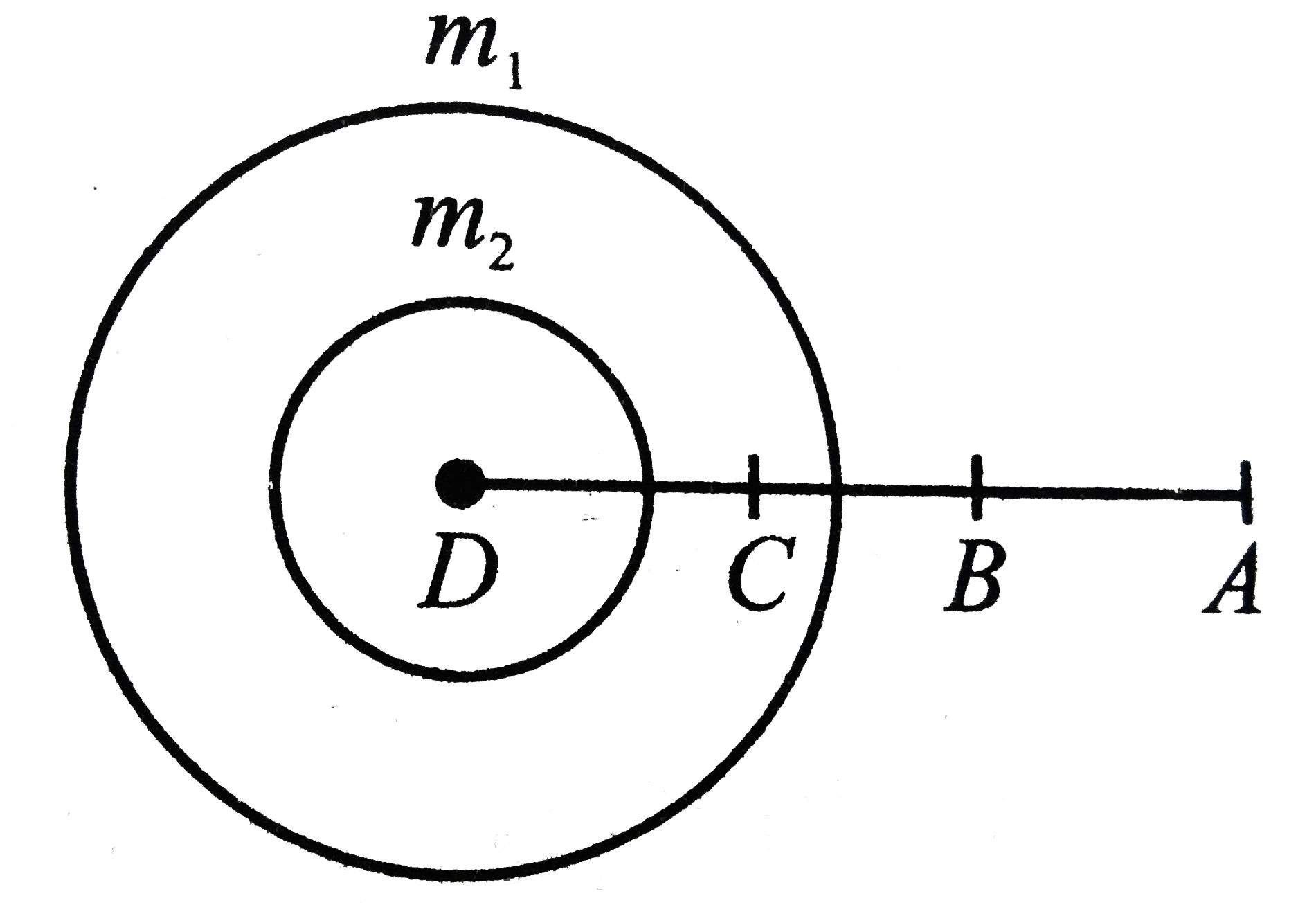
A
B
C
D
The correct Answer is:D
The gravitational field intensity at a point inside the spherical shell is zero.
Topper's Solved these Questions
- BOOK - CENGAGE PHYSICSCHAPTER - GRAVITATIONEXERCISE - Multiple Correct24videos
GRAVITATION
- BOOK - CENGAGE PHYSICSCHAPTER - GRAVITATIONEXERCISE - Assertion- Reasoning13videos
GRAVITATION
- BOOK - CENGAGE PHYSICSCHAPTER - GRAVITATIONEXERCISE - Subjective15videos
GRAVITATION
- BOOK - CENGAGE PHYSICSCHAPTER - FLUID MECHANICSEXERCISE - INTEGER_TYPE1videos
FLUID MECHANICS
- BOOK - CENGAGE PHYSICSCHAPTER - KINEMATICS-1EXERCISE - Integer9videos
KINEMATICS-1
Similar Questions
Two concentric shells of mass m1 and m2 are situated as shown. Find the force on a particle of mass m when the particles is located at (a)r=r1,(b)r=r2,(c)r=r3. The distance r is measured from the centre of the shell.
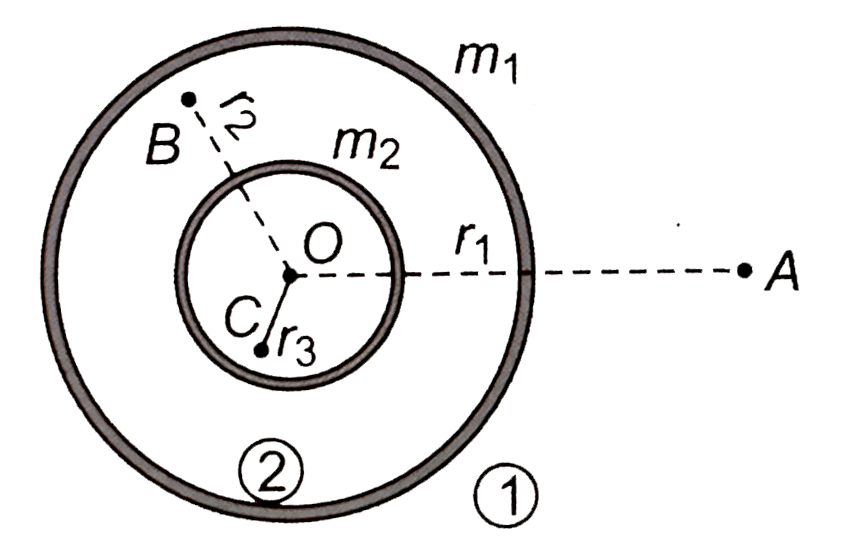 View Solution
View SolutionThe figure below shows a spherical shell of mass M -and radius R in a force-free region with an opening. A par'ticle of mass m is released from a distance R in front of the opening. If the speed with which the particle will hit the point C on the shell, opposite to the opening, is v=√nGM4R, Find n
'(##CEN_KSR_PHY_JEE_C10_037_Q04##)'View Solution
Knowledge Check
- Question 1 - Select One
The figure shows a spherical shell of mass M. The point a is not at the centre but away from the centre of the shell. If a particle of mass m is placed at A, then
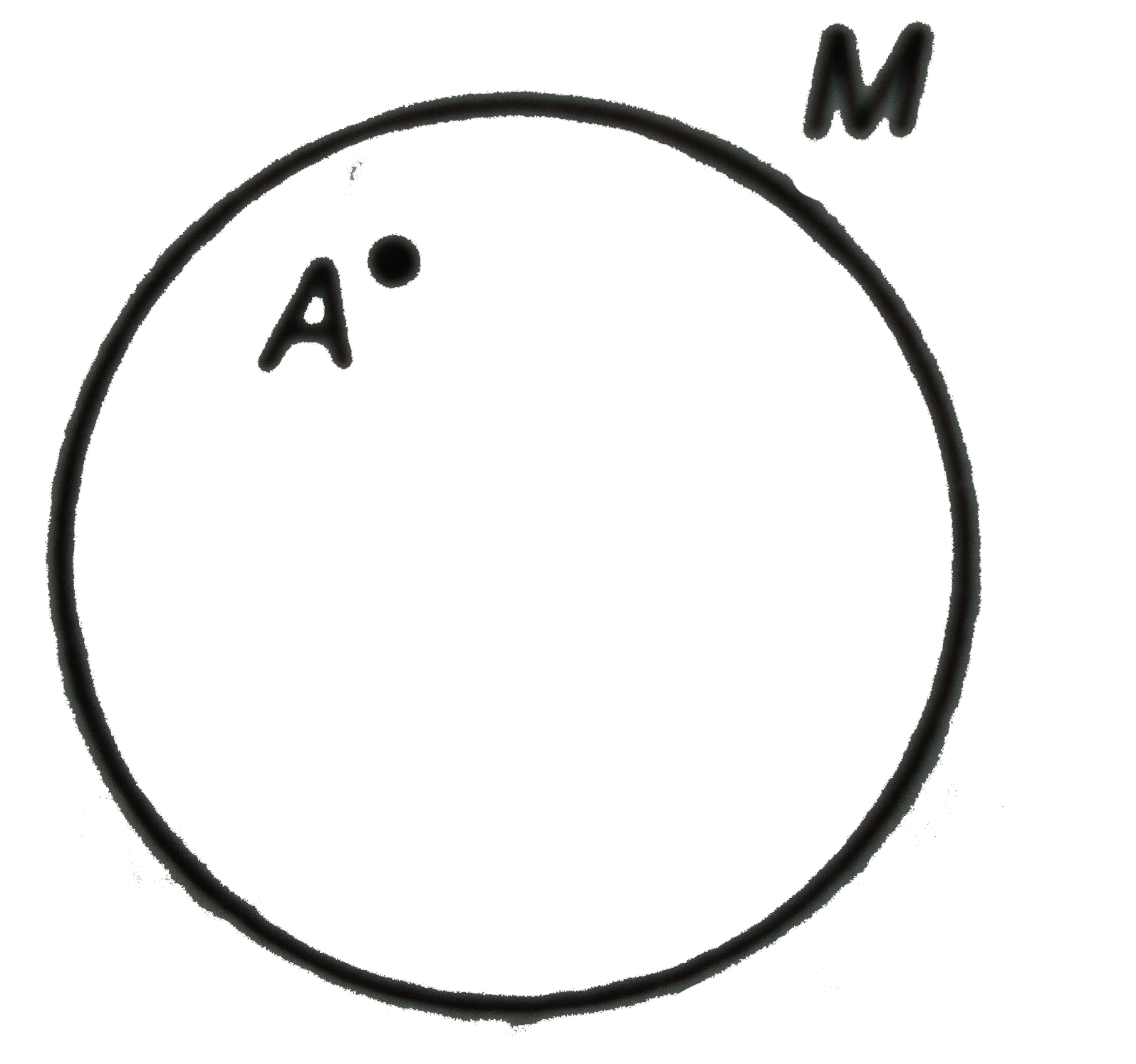 Ait remains at restBit experiences a net force towards the centreCit experiences a net force away from the centreDNone of the above
Ait remains at restBit experiences a net force towards the centreCit experiences a net force away from the centreDNone of the above - Question 2 - Select One
In the figure given below, two particles of masses m and 2m are fixed in place on an axis. Where on the axis can a third particle of mass 3m be placed (other than at infinity) so that the gravitational force on it from the first two particles is zero?
 ABetween m and 2 mBLeft of mCRight of 2mDThe net gravitational force on 3m never be zero
ABetween m and 2 mBLeft of mCRight of 2mDThe net gravitational force on 3m never be zero - Question 3 - Select One
Two concentric shells of uniform density of mass M1 and M2 are situated. The forces experienced by a particle of mass m when palced at positions A,B and C respectively are given OA =p,OB = q and OC =r .
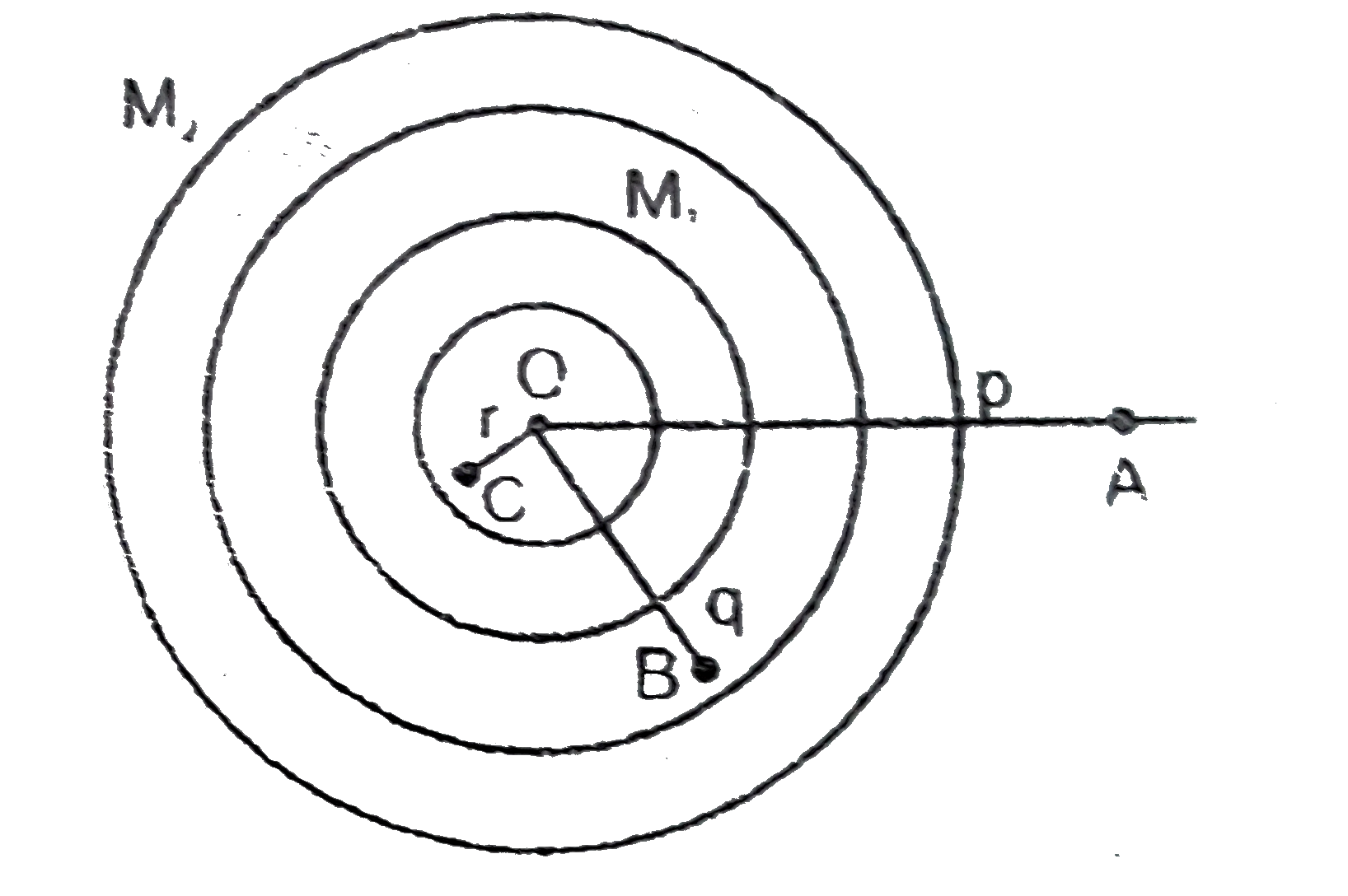 .Azero,GM1mq2and G(M1+m2)mp2BG(m1+M2m)p2andG(M1+m2)mq2andGM1mr2CGM1mq2,GM1mq2 and zeroDG(M1+M2)mp2,GM1mq2 and zero
.Azero,GM1mq2and G(M1+m2)mp2BG(m1+M2m)p2andG(M1+m2)mq2andGM1mr2CGM1mq2,GM1mq2 and zeroDG(M1+M2)mp2,GM1mq2 and zero
Two concentric shells of masses M1 and M2 are concentric as shown. Calculate the gravitational force on m due to M1 at points P,Q and R.
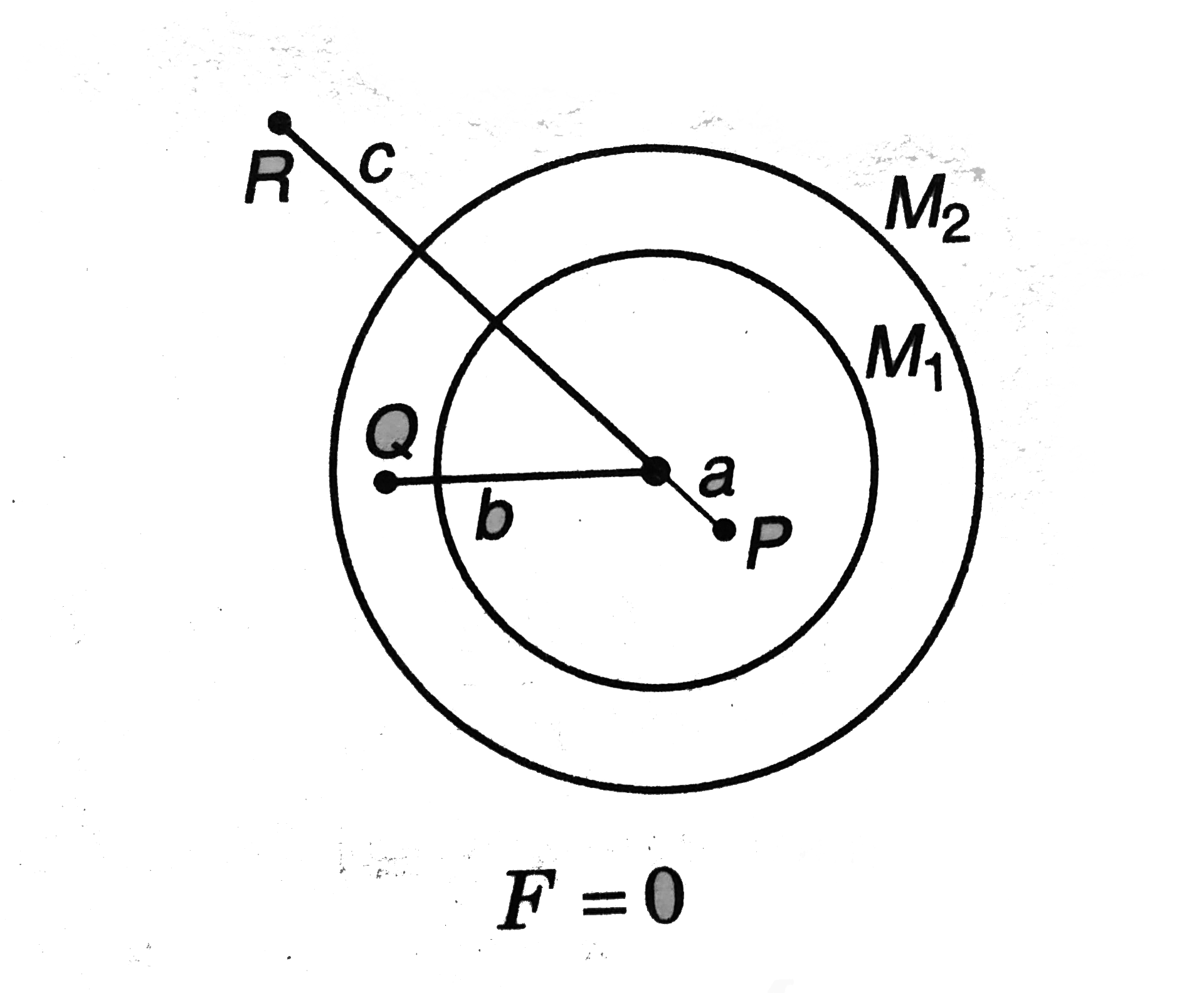 View Solution
View SolutionTwo stationary particles of masses M1 and M2 are 'd' distance apart. A third particle lying on the line joining the particles, experiences no resultant gravitational force. What is the distance of this particle from M1 ?
View SolutionF is the gravitational force between two point masses m1 and m2 , separated by a distance d. A point mass 2m1 is then brought near m1. What is the total force on m2 ?
View SolutionTwo spherical shells have masses mand 2m as shows. Choose the correct options.
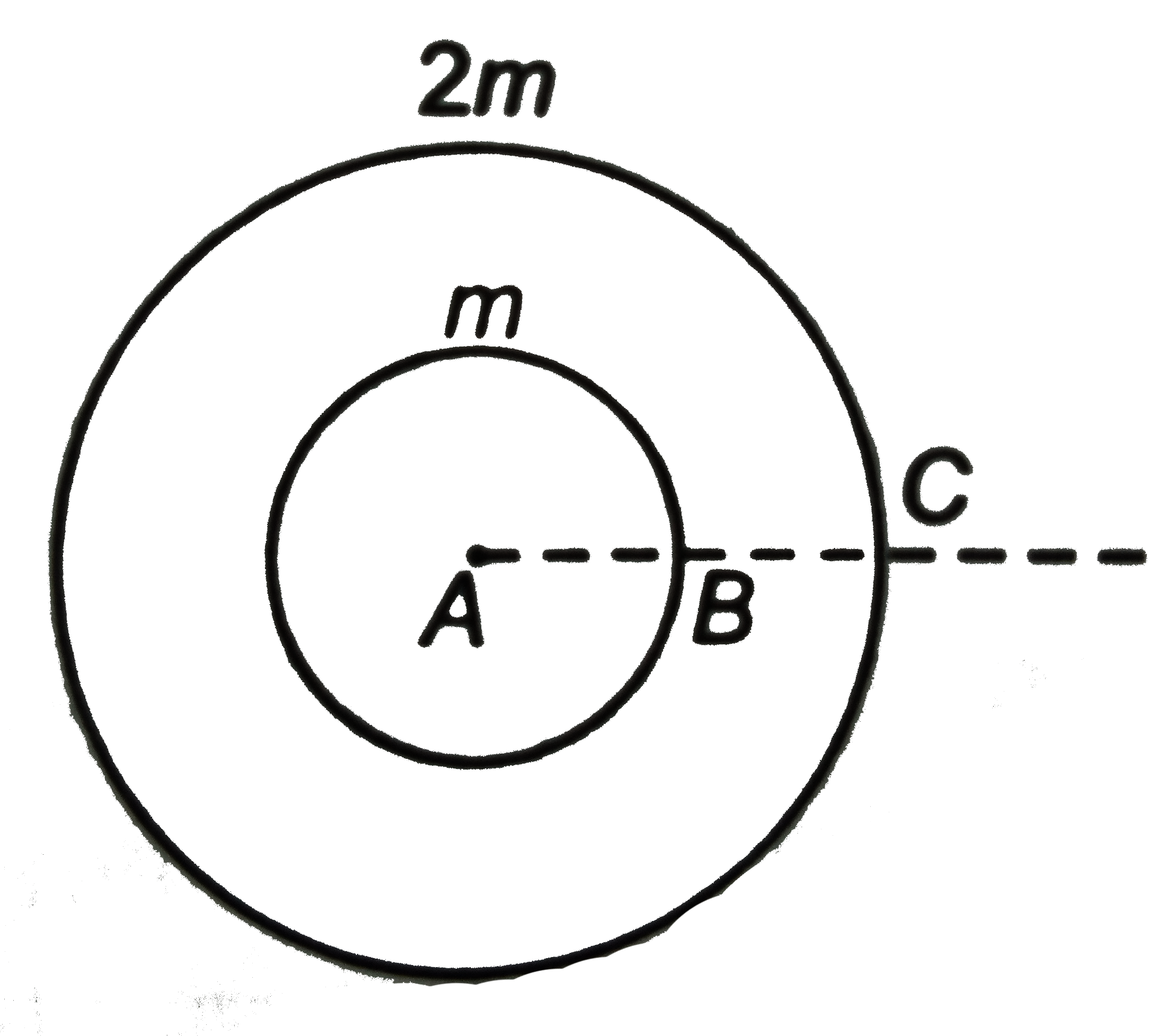 View Solution
View SolutionConsider a system of two particles having masses m1 and m2. If the particle of mass m1 is pushed towards the centre of mass of particles through a distance d, by what distance would the particle of mass m2 move so as to keep the mass centre of particles at the original position?
View Solution

